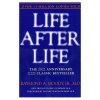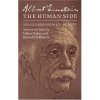- 注册
- 2009-11-04
- 消息
- 708
- 荣誉分数
- 196
- 声望点数
- 153
In Life After Life Raymond Moody investigates more than one hundred case studies of people who experienced "clinical death" and were subsequently revived. First published in 1975, this classic exploration of life after death started a revolution in popular attitudes about the afterlife and established Dr. Moody as the world's leading authority in the field of near-death experiences.
Life after Life forever changed the way we understand both death — and life — selling millions of copies to a world hungry for a greater understanding of this mysterious phenomenon.
The extraordinary stories presented here provide evidence that there is life after physical death, as Moody recounts the testimonies of those who have been to the "other side" and back — all bearing striking similarities of an overwelming positive nature. These moving and inspiring accounts give us a glimpse of the peace and unconditional love that await us all.
Life after Life forever changed the way we understand both death — and life — selling millions of copies to a world hungry for a greater understanding of this mysterious phenomenon.
The extraordinary stories presented here provide evidence that there is life after physical death, as Moody recounts the testimonies of those who have been to the "other side" and back — all bearing striking similarities of an overwelming positive nature. These moving and inspiring accounts give us a glimpse of the peace and unconditional love that await us all.



